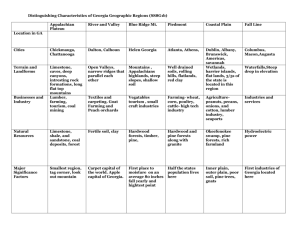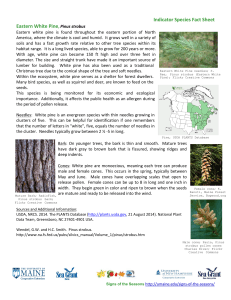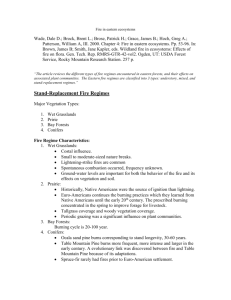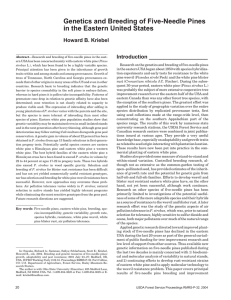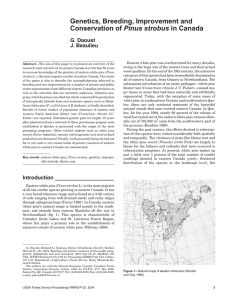Research Report from the Yale School Forests Research Highlights
advertisement
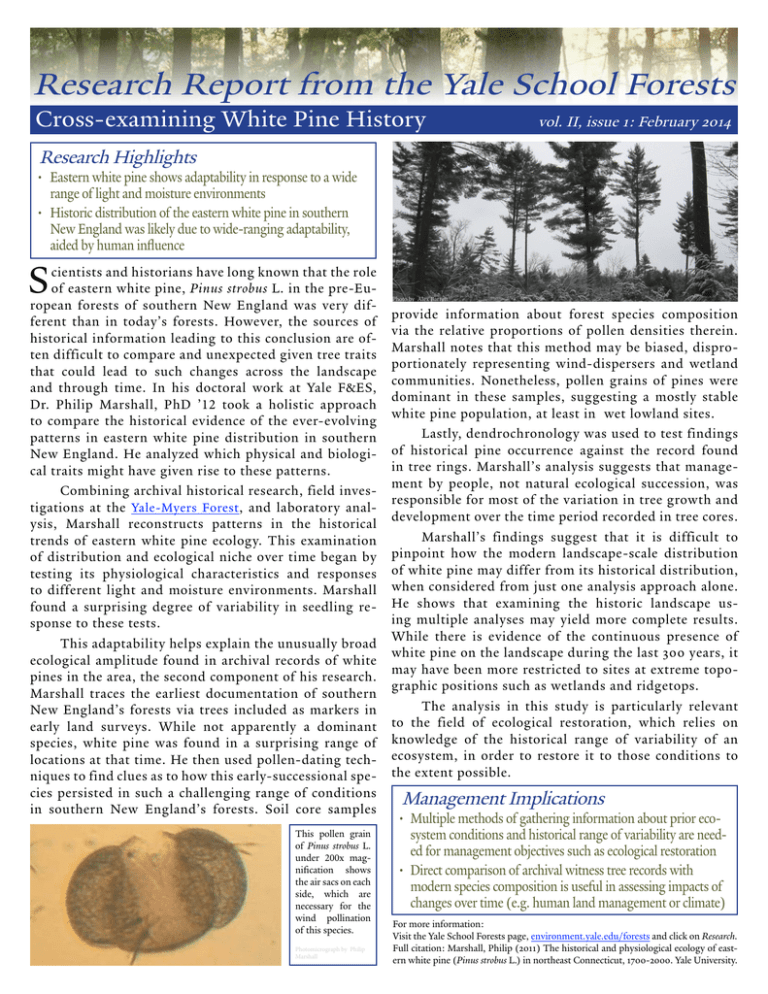
Research Report from the Yale School Forests Cross-examining White Pine History vol. II, issue 1: February 2014 Research Highlights • Eastern white pine shows adaptability in response to a wide range of light and moisture environments • Historic distribution of the eastern white pine in southern New England was likely due to wide-ranging adaptability, aided by human influence S cientists and historians have long known that the role of eastern white pine, Pinus strobus L. in the pre-European forests of southern New England was very different than in today’s forests. However, the sources of historical information leading to this conclusion are often difficult to compare and unexpected given tree traits that could lead to such changes across the landscape and through time. In his doctoral work at Yale F&ES, Dr. Philip Marshall, PhD ’12 took a holistic approach to compare the historical evidence of the ever-evolving patterns in eastern white pine distribution in southern New England. He analyzed which physical and biological traits might have given rise to these patterns. Combining archival historical research, field investigations at the Yale-Myers Forest , and laboratory analysis, Marshall reconstructs patterns in the historical trends of eastern white pine ecology. This examination of distribution and ecological niche over time began by testing its physiological characteristics and responses to different light and moisture environments. Marshall found a surprising degree of variability in seedling response to these tests. This adaptability helps explain the unusually broad ecological amplitude found in archival records of white pines in the area, the second component of his research. Marshall traces the earliest documentation of southern New England’s forests via trees included as markers in early land surveys. While not apparently a dominant species, white pine was found in a surprising range of locations at that time. He then used pollen-dating techniques to find clues as to how this early-successional species persisted in such a challenging range of conditions in southern New England’s forests. Soil core samples This pollen grain of Pinus strobus L. under 200x magnification shows the air sacs on each side, which are necessary for the wind pollination of this species. Photomicrograph by Philip Marshall Photo by Alex Barrett provide information about forest species composition via the relative proportions of pollen densities therein. Marshall notes that this method may be biased, disproportionately representing wind-dispersers and wetland communities. Nonetheless, pollen grains of pines were dominant in these samples, suggesting a mostly stable white pine population, at least in wet lowland sites. Lastly, dendrochronology was used to test findings of historical pine occurrence against the record found in tree rings. Marshall’s analysis suggests that management by people, not natural ecological succession, was responsible for most of the variation in tree growth and development over the time period recorded in tree cores. Marshall’s findings suggest that it is difficult to pinpoint how the modern landscape-scale distribution of white pine may differ from its historical distribution, when considered from just one analysis approach alone. He shows that examining the historic landscape using multiple analyses may yield more complete results. While there is evidence of the continuous presence of white pine on the landscape during the last 300 years, it may have been more restricted to sites at extreme topographic positions such as wetlands and ridgetops. The analysis in this study is particularly relevant to the field of ecological restoration, which relies on knowledge of the historical range of variability of an ecosystem, in order to restore it to those conditions to the extent possible. Management Implications • Multiple methods of gathering information about prior ecosystem conditions and historical range of variability are needed for management objectives such as ecological restoration • Direct comparison of archival witness tree records with modern species composition is useful in assessing impacts of changes over time (e.g. human land management or climate) For more information: Visit the Yale School Forests page, environment.yale.edu/forests and click on Research. Full citation: Marshall, Philip (2011) The historical and physiological ecology of eastern white pine (Pinus strobus L.) in northeast Connecticut, 1700-2000. Yale University.

